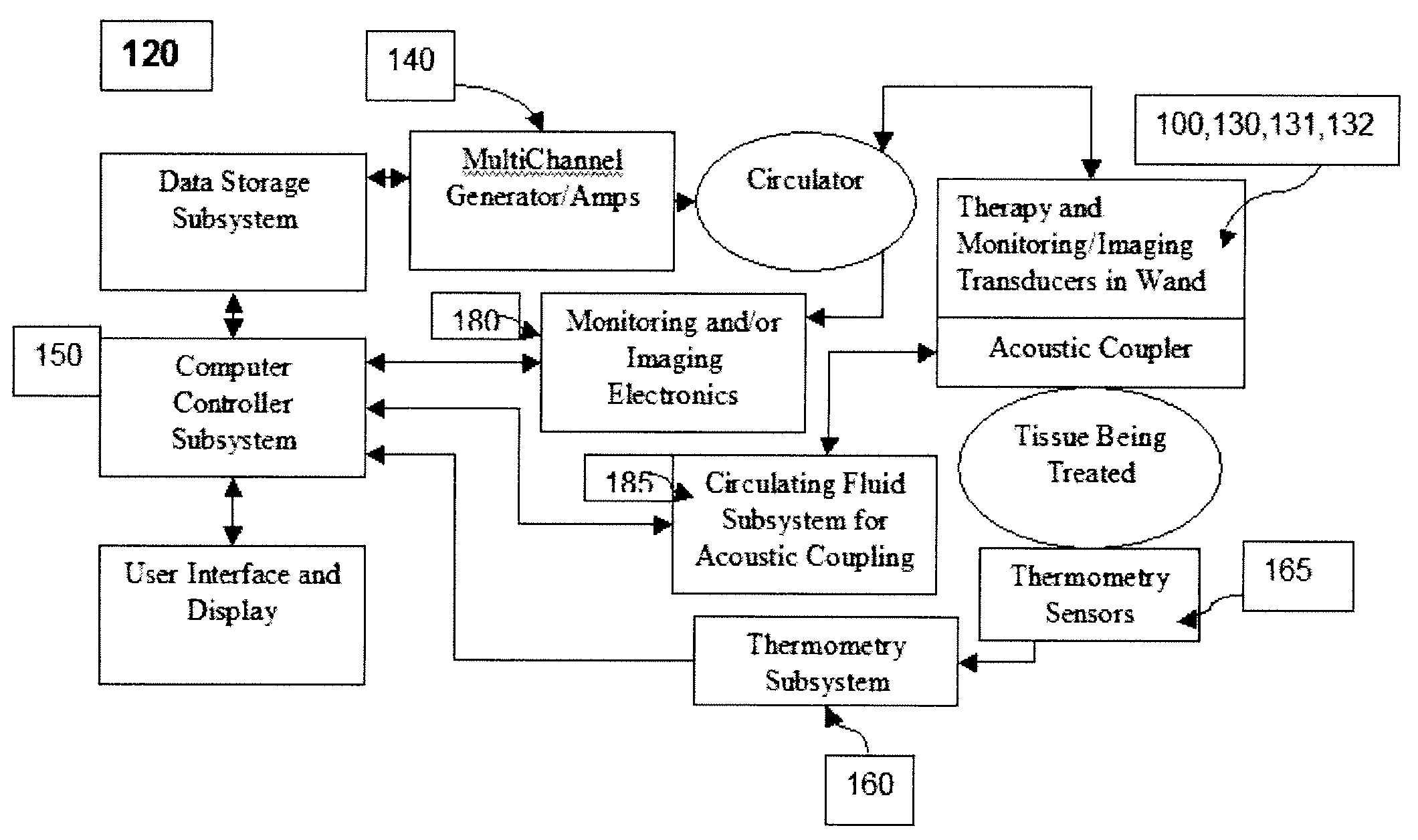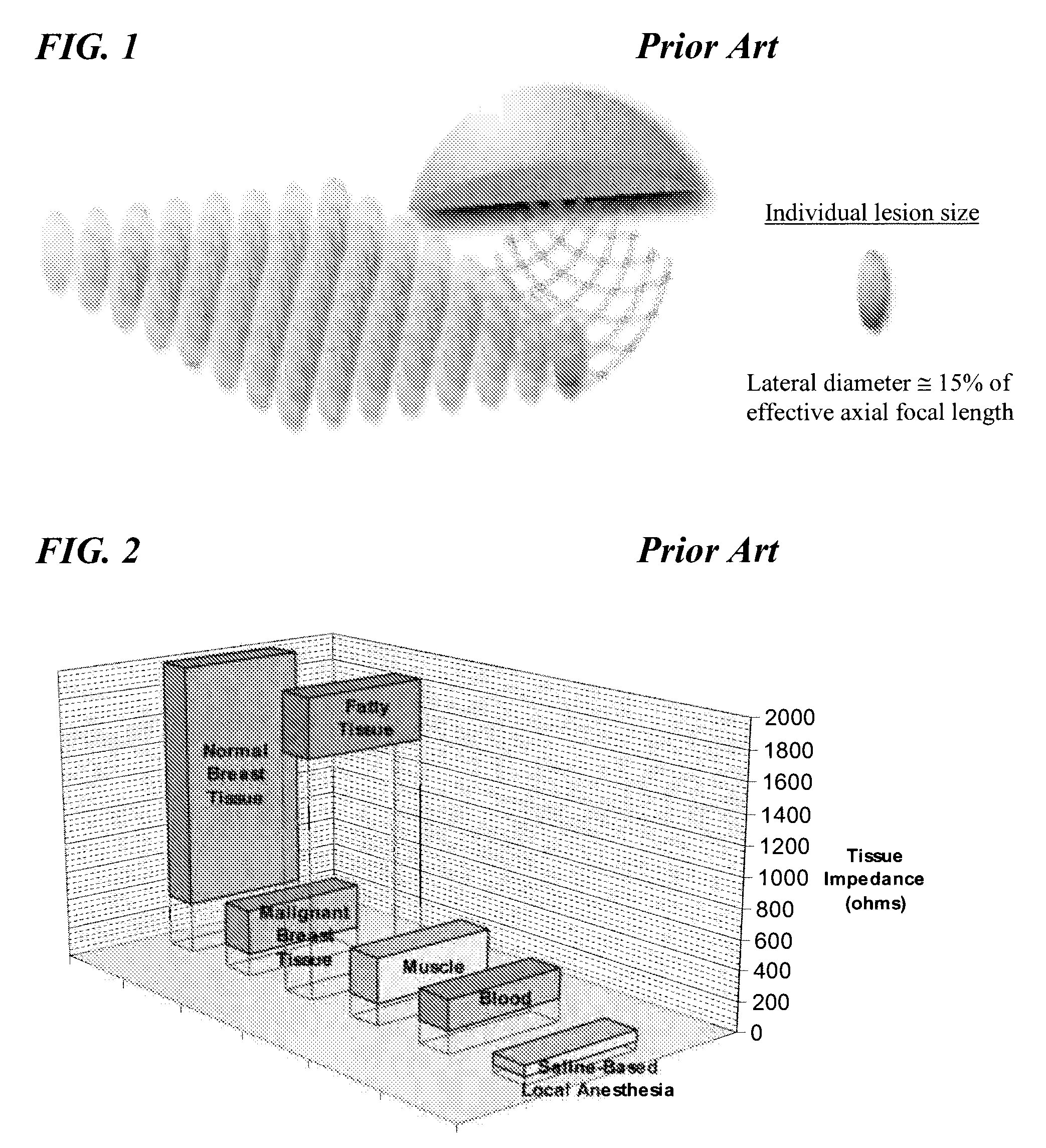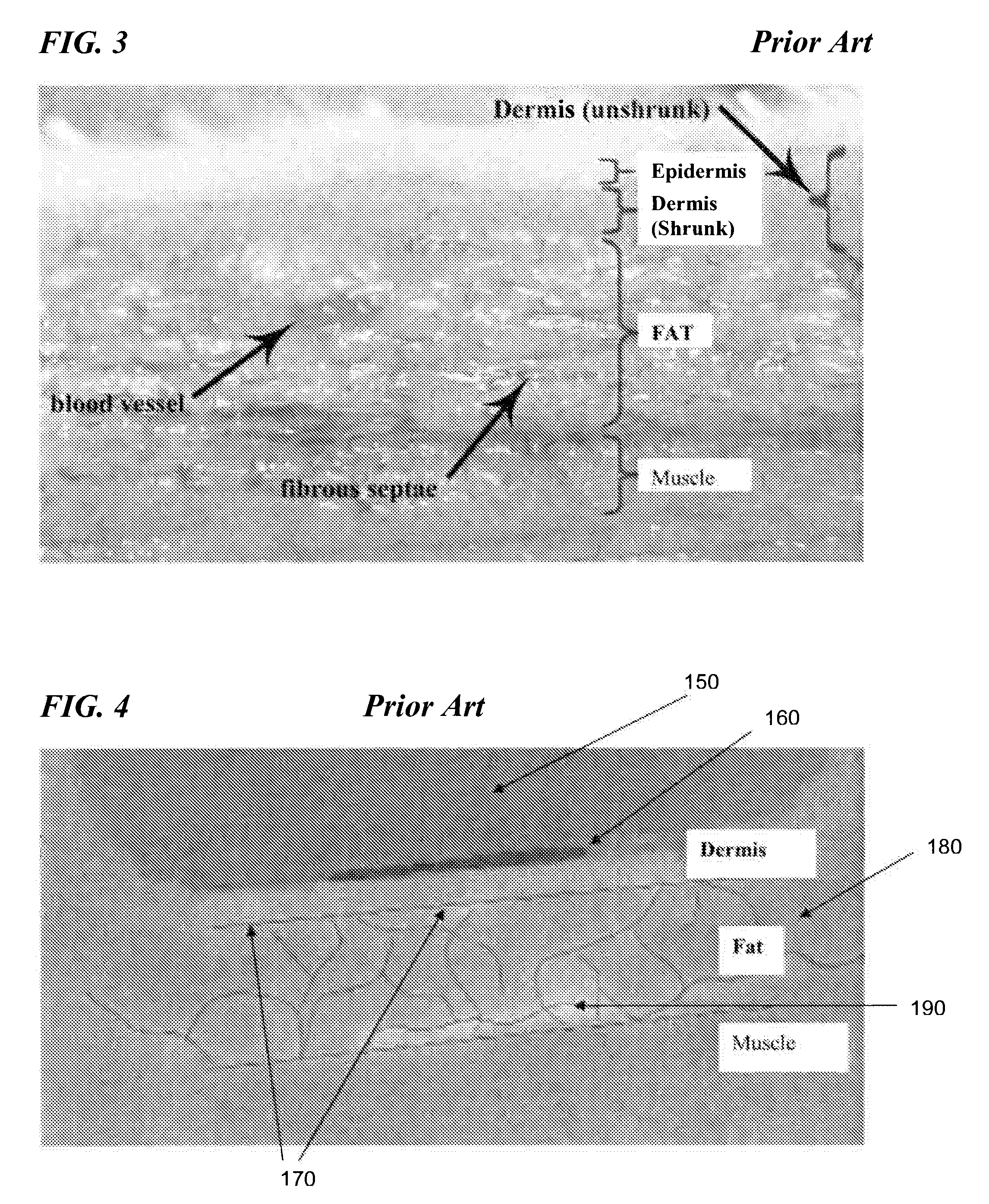Acoustic applicators for controlled thermal modification of tissue
a technology of tissue and applicator, which is applied in the field of acoustic applicators for controlled thermal modification of tissue, can solve the problem of simply being unfavorabl
- Summary
- Abstract
- Description
- Claims
- Application Information
AI Technical Summary
Benefits of technology
Problems solved by technology
Method used
Image
Examples
example 1
[0118]Skin tissue samples were mounted on a 2.5 cm thick hard rubber base and backed by acoustic absorber material. The samples were anchored using push pins. Two curvilinear transducers were used for the experimental studies. Both transducers were 0.8 cm width and 2.1 cm in length. The center frequency of the transducers were 7.7 MHz and 8.2 MHz, respectively. The radii of curvature were similar, being 3.6 mm for the 7.7 MHz transducer and 4.0 mm for the 8.2 MHz transducer. During the tests, 2.5 Watts were applied to the 3.6 mm dia (7.7 MHz) transducer and 12 Watts for the 4.0 mm dia (8.2 MHz) transducer.
[0119]Temperature sensors were placed at the surface of the skin tissue, at a depth of 2.1 mm, 4.3 mm, and 5.8 mm beneath the skin surface. A photo of the setup on an ex-vivo skin tissue sample is shown in FIG. 12. Schematic diagrams of the setup configurations used for dosimetry studies for single curvilinear transducer are shown in FIGS. 13A-13C, Setup 1 and FIGS. 14A-14C for Set...
example 2
[0122]In Sample 1, 12 Watts of acoustic power was applied at 8.2 MHz. As shown in FIG. 15, The maximum temperature was measured at the 2.1 mm deep thermocouple as expected for this transducer. In this test, the maximum temperature at 2.1 mm was measured at 61° C. at 4.5 sec, after which power was discontinued to the ultrasound transducer. The three surface thermocouples (A,B,C) measured 27° C., 29° C., and 33° C. respectively at 4.5 sec, but continued to rise to 27° C., 32° C., and 36° C. at times between 6 sec and 7 sec because of thermal conduction in the tissue and non-circulating cooling liquid (see FIG. 16). The 4.3 mm deep thermocouples (E,F) measured 53° C. and 47° C. at 4.5 sec, but sensor E continued to rise to 55° C., peaking at 5.8 sec (see FIG. 17). The 5.8 mm deep thermocouples (G,H) measured 44° C. and 36° C. respectively at 4.5 sec, but continued to rise to 41° C. and 47° C. at 6 sec due to thermal conduction.
example 3
[0123]In Sample 2, 8 Watts of acoustic power was applied at 8.2 MHz. As shown in FIG. 18 maximum temperature was measured at the 2.1 mm deep thermocouple as expected for this transducer. As illustrated in FIG. 19 this test, the temperature at 2.1 mm was measured at 60° C. at 6 sec, after which power was discontinued to the ultrasound transducer. The two surface thermocouples measured 30° C. and 36° C. at 6 sec but continued to rise to 36° C. and 33° C. at times between 6 sec and 10 sec because of thermal conduction in the tissue (see FIG. 20). The 2.1 mm deep thermocouple measured 54° C. at 6 sec. The 5.8 mm deep thermocouples measured 49° C. at 6 sec.
PUM
 Login to View More
Login to View More Abstract
Description
Claims
Application Information
 Login to View More
Login to View More - R&D
- Intellectual Property
- Life Sciences
- Materials
- Tech Scout
- Unparalleled Data Quality
- Higher Quality Content
- 60% Fewer Hallucinations
Browse by: Latest US Patents, China's latest patents, Technical Efficacy Thesaurus, Application Domain, Technology Topic, Popular Technical Reports.
© 2025 PatSnap. All rights reserved.Legal|Privacy policy|Modern Slavery Act Transparency Statement|Sitemap|About US| Contact US: help@patsnap.com



